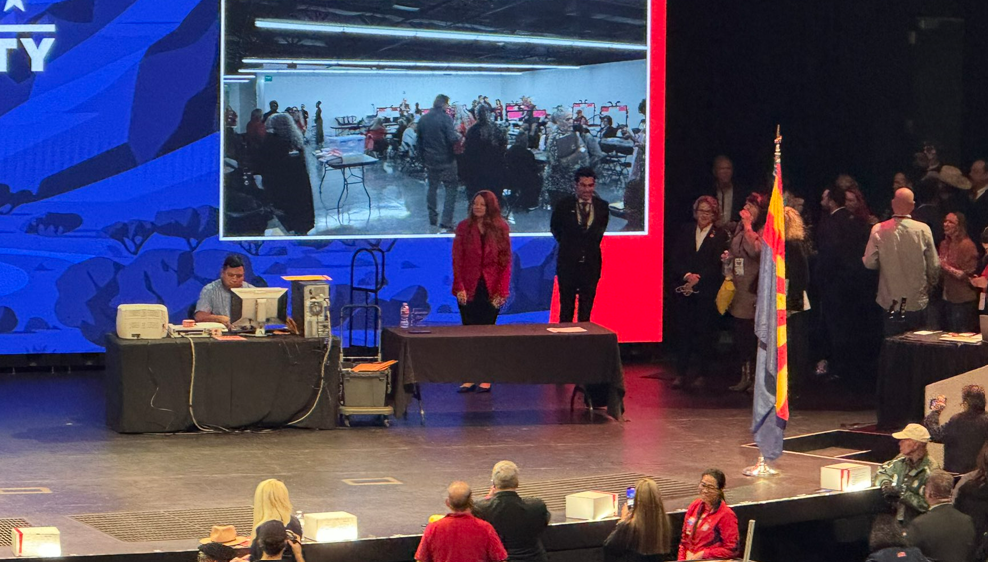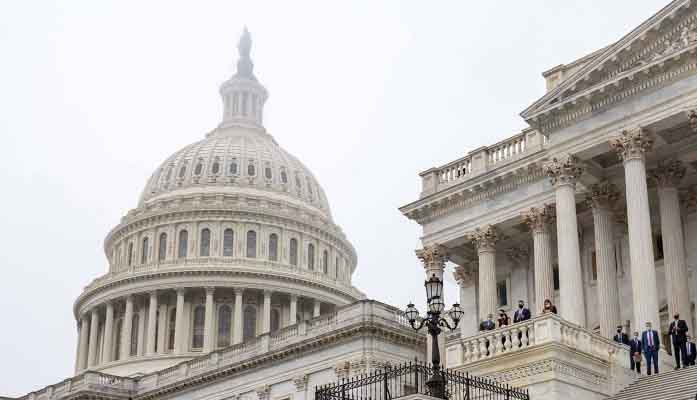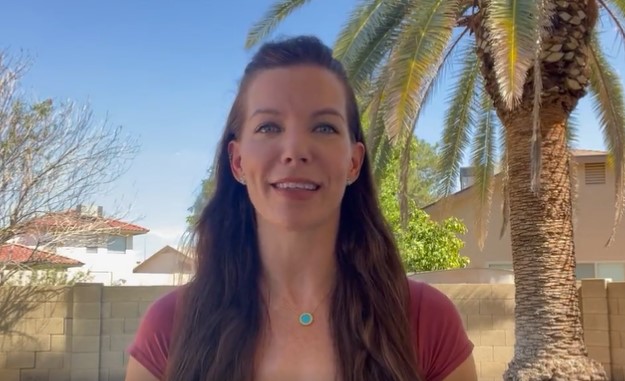
by Daniel Stefanski | Jan 31, 2024 | News
By Daniel Stefanski |
The 45th President of the United States proved, yet again, to be the Republican kingmaker in the Grand Canyon State.
After a sudden vacancy at the Republican Party of Arizona, former President Donald J. Trump broke his curious public silence over the politically volatile situation, endorsing a surprise contender, Gina Swoboda, for chair. Trump said, “Gina Swoboda has my Complete and Total Endorsement to be Chairwoman of the Republican Party of Arizona. She is an outstanding person with incredible passion for our Party, which she will quickly MAKE GREAT AGAIN! ARIZONA2024”
Many Republicans from different factions across the state quickly echoed the former President’s sentiments, throwing their support behind Swoboda. This flurry of activity and endorsements ended up giving Swoboda a massive victory at the annual party meeting on Saturday.
Once Swoboda secured her runaway win to become the next chair of the state Republican Party, she expressed her gratitude to Trump for his support. On “X,” Swoboda wrote, “Arizona is the key to the presidency. I was proud to have the support of President Trump in this victory to lead the AZGOP into the most important election of our lifetime. Now it’s time to turn out every last vote for the 47th President, DONALD J TRUMP!”
Karoline Leavitt, the National Press Secretary for the Trump Campaign, responded to Swoboda’s hat tip to the current frontrunner for the Republican nomination, saying, “Congratulations to the newly elected Trump-Endorsed Arizona GOP Chairwoman, Gina Swoboda!”
Swoboda’s ascension to AZGOP Chair appeared to come out of nowhere as the hours ticked away toward the annual meeting. After the chairman’s vacancy occurred, two competing slates quickly emerged for the job, and speculation indicated that one of the candidates may have, at the least, been inquiring about information for a challenge to the state party’s top spot – even before the opening. Trump’s endorsement then flipped the narrative and potential outcome, showing the party faithful and outside onlookers alike that his endorsement reigns supreme for State 48 Republicans.
The new Republican Chairwoman of the AZGOP will have her hands full this year as she attempts to lead her party back into the win columns during the November General Election. Securing Arizona’s eleven electoral votes for Trump will be top of mind for Swoboda, followed by competitive U.S. Senate and congressional races. She will also be expected to lead the Republicans to victory at the state legislature, ensuring that Democrats and Governor Katie Hobbs are held in check for the next two years. Additionally, the state Republican Party will likely weigh in on several key initiatives that are expected to appear on the ballot for voters, including abortion and election system reform.
Daniel Stefanski is a reporter for AZ Free News. You can send him news tips using this link.

by Elizabeth Troutman | Jan 31, 2024 | News
By Elizabeth Troutman |
Arizona Women of Action are urging the state legislature to pass a bill preventing children from accessing pornography.
“This non partisan bill needs SUPPORT,” the activist group said on Twitter. “It would effectively protect AZ kids from accessing pornography. Age verification is a must!”
Sponsored by Republican state representatives Tim Dunn and Ben Toma, House Bill 2586 adds a new section to a statute regulating the “publishing and distribution of material harmful to minors on the internet.”
The bill subjects commercial entities to civil liabilities for damages if they knowingly publish or distribute material harmful to minors on the internet on a website without age verification.
The legislation “Specifies that a commercial entity that fails to perform the age verification method described above is liable to an individual for the damages that result from a minor accessing the material harmful to minors, including court costs and reasonable attorney fees.”
If the bill passes, Arizona would be the tenth U.S. state to pass legislation requiring some form of age-verification for access to certain materials on the internet.
The other nine states include Arkansas, California, Louisiana, Mississippi, Montana, North Carolina, Texas, Utah, and Virginia.
The Protect Arizona Children Coalition also voiced its support for the bill.
“We can’t believe this needs to be said…Pornography isn’t for kids,” the PACC tweeted, asking citizens to voice their support for the bill at its hearing on Jan. 31.
Elizabeth Troutman is a reporter for AZ Free News. You can send her news tips using this link.

by Daniel Stefanski | Jan 31, 2024 | News
By Daniel Stefanski |
A famous burger restaurant chain is closing operations in one California city.
Last week, In-N-Out Burger announced it would soon be closing its Oakland location. In a statement released by Denny Warnick, the company’s Chief Operating Officer, the decision was made “due to ongoing issues with crime.” Warnick explained that “despite taking repeated steps to create safer conditions, our Customers and Associates are regularly victimized by car break-ins, property damage, theft, and armed robberies.”
According to Warnick’s statement, the In-N-Out’s Oakland location was “busy and profitable,” but the company highlighted its “top priority” of ensuring the safety and well-being of our Customers and Associates,” adding that “we cannot ask them to visit or work in an unsafe environment.”
When asked by AZ Free News about the development out of Oakland, Arizona Senate President Warren Petersen replied, “Arizona Republicans believe in the rule of law, and as a result, the policies we’ve implemented over the past decade have kept our state safe. Democrats have a track record of being soft on crime, and if they gain control of Arizona, it’s likely we will endure the same sad fate as Oakland, where criminals and lawlessness reign over our communities.”
The National Fraternal Order of Police addressed the Oakland news in a post on its “X” account, writing, “The closure of In-N-Out’s Oakland restaurant not only emphasizes the impact of persistent crime on our communities but also brings sadness for the employees losing their jobs. As we reflect on this, questions arise about leadership and community safety. Shouldn’t leaders actively combat lawlessness to protect businesses, jobs, and the well-being of individuals?”
As of January 24, there are 401 In-N-Out locations across 287 cities in the United States, according to the data company ScrapeHero. Out of those total locations, 275 are in California. Arizona has 34 restaurants – the third-most of the 8 states and territories that currently host the In-N-Out chain.
The Oakland In-N-Out location will continue operations until Sunday, March 24, 2024.
Daniel Stefanski is a reporter for AZ Free News. You can send him news tips using this link.

by Corinne Murdock | Jan 30, 2024 | News
By Corinne Murdock |
The newly-elected chair of the Arizona Republican Party (AZGOP), Gina Swoboda, revealed that GOP leadership plans to sue Secretary of State Adrian Fontes over the Elections Procedures Manual (EPM).
Swoboda dropped the news in an interview with Steve Bannon. She said Fontes’ EPM was “off the rails” and worse than the one produced by his predecessor, now-Gov. Katie Hobbs.
“The legislature’s going to drop a lawsuit this week, the AZGOP’s going to drop the lawsuit this week,” said Swoboda.
Bannon questioned why the lawsuits weren’t dropped earlier, to which Swoboda informed Bannon that the EPM was published on Dec. 30.
On top of discarding Fontes’ EPM, Swoboda revealed that the state party would attempt to get rid of unstaffed drop boxes and implement stricter requirements for signature verification.
“What we can do is get in there now, eliminate the things that are the worst of the gaps in the system: the unmanned drop boxes, the lack of any requirements for signature verification, […] and what’s in this procedure’s manual will blow off the door, so if we thought what we saw before is bad, it’s off the rails,” said Swoboda.
Prior to her election as chair of AZGOP, Swoboda was a deputy registrar for the Maricopa County Recorder’s Office, the AZGOP Election Integrity Committee chair, and the executive director for an organization that published voter rolls online: Voter Reference Foundation (VRF), a subsidiary of Restoration of America.
Swoboda said that she hadn’t originally planned to run for party chair until she received a call from former President Donald Trump.
Top Democratic lawyer Marc Elias referred to her selection as “a worrying choice,” citing her VRF involvement.
Swoboda rebutted that Elias was “scared” of her.
“I think Marc is scared of me and I think they actually tried to do a lot of damage over the last three days,” said Swoboda. “We need to litigate, we need to protect ourselves from lawfare, that’s how they weakened the system in 2020 and we didn’t see them coming. We know where they are.”
Despite expressing worry over Swoboda, Elias said that he didn’t feel threatened by the prospect of further litigation.
In order to engage in that lawfare against Elias and others, Swoboda said the party required more funding. Swoboda disclosed that the AZGOP was “broke” and that there were financial unknowns dating back to a year regarding the party’s profits and losses. Swoboda said that the party was “running on fumes.”
“If I can’t litigate, I can’t protect us,” said Swoboda. “We’ve got to take it to them, we can’t sit here and wait and then try to flail about when it’s too late and it’s already started. We’ve got to do it now, we’re bringing it now, but we need support to do it.”
Corinne Murdock is a reporter for AZ Free News. Follow her latest on Twitter, or email tips to corinne@azfreenews.com.

by Corinne Murdock | Jan 30, 2024 | News
By Corinne Murdock |
House Democrats believe that Americans who think the border is mismanaged are “confused.”
Democrats in the House Homeland Security Committee issued the remarks during a press conference on Monday addressing the newly-released articles of impeachment against Department of Homeland Security (DHS) Alejandro Mayorkas. Committee Republicans published the draft articles on Sunday.
Rep. Bennie Thompson (D-MS-02), ranking member, indicated that DHS was handling the border correctly and operating in line with the direction of President Joe Biden. Thompson noted that the greater concern for he and his Democratic colleagues was that the impeachment efforts were the cause of lost confidence in DHS and Mayorkas.
“Democrats are real concerned that this is just one of those efforts to confuse the public that something is going wrong at the Department of Homeland Security. Our secretary works at the direction of the president,” said Thompson. “This notion that in carrying out the directions of your boss somehow is an impeachable offense is wrong.”
House Minority Leader Hakeem Jeffries (D-NY-08) also spoke at the press conference. Jeffries claimed that it was “extreme MAGA Republicans” who were misleading the American public on the state of the border. Jeffries further claimed that House Republicans produced “no evidence” that Mayorkas committed an impeachable or unconstitutional offense.
“The extreme MAGA republicans have been directed by Donald Trump not to work together to address the challenges at the border and to instead distract the American people,” said Jeffries.
Rep. Dan Goldman (D-NY-10), another committee member, argued that Republicans caused the border crisis. Goldman claimed that the Biden administration implemented policies to streamline the asylum process, reduce the immigration case backlog, and a cessation of illegal immigration between ports of entry.
“The Republicans are literally trying to stop the administration from securing the border, while they are saying, and so they can say, that the administration is not securing the border,” said Goldman. “They are creating this situation and then they want to blame President Biden.”
Under the first few weeks of his administration, the country experienced an unprecedented deluge of illegal immigration after Biden reversed most of the border policies from his predecessor, former President Donald Trump.
As reported extensively throughout investigations published by the Homeland Security Committee and border agents on the ground, illegal immigrants and cartels have become increasingly emboldened to violate border and trafficking laws. Last week, smugglers assaulted a Border Patrol agent arresting several illegal immigrants.
Since Biden took office, there have been over 7.15 million illegal immigrant encounters at the southern border, and an unknown number of gotaways estimated in total to be around several million.
In the 2023 fiscal year, U.S. Customs and Border Protection (CBP) arrested over 35,400 illegal immigrants with criminal convictions nationwide, of whom nearly 600 were known gang members. Since the 2021 fiscal year, agents have arrested nearly 300 illegal immigrants on the terrorist watchlist.
The House Homeland Security Committee is scheduled to consider the articles of impeachment against Mayorkas on Tuesday at 8 am. The hearing will be streamed here.
Corinne Murdock is a reporter for AZ Free News. Follow her latest on Twitter, or email tips to corinne@azfreenews.com.

by Elizabeth Troutman | Jan 29, 2024 | Education, News
By Elizabeth Troutman |
Former Arizona state Senator Michelle Ugenti-Rita called on Rep. Jake Hoffman, founding chairman of the Arizona Freedom Caucus, to amend a bill involving sexually explicit materials in schools to include the Maricopa County Library District.
Senate Bill 1007 proposed by Hoffman, a Republican, makes it a class 5 felony for a public school to show a student sexually explicit materials or use it in the classroom in any way.
“I would like to encourage the bill sponsor, @JakeHoffmanAZ and my former colleagues to amend this bill to include the Maricopa County Library District since @ThomasGalvin won’t do anything to stop county libraries from facilitating a liberal woke agenda by promoting sexually graphic and sensitive material to children,” said Ugenti-Rita, a Republican who represented Arizona’s District 23 from 2019 to 2023.
The bill prohibits Arizona public schools to refer students to sexually explicit material unless “the material possesses serious educational value for minors or serious literary, artistic, political or scientific value” or “the public school requires written parental consent, on a per-material basis, before referring a student to or using the material.”
The public school must also provide students whose parents do not consent for them to see the material with an alternative assignment that does not contain sexually explicit material.
Sexually explicit materials include “textual, visual or audio materials or materials accessed via any other medium that depict sexual conduct, sexual excitement or ultimate sexual acts,” the bill says.
Charter schools can require parents to waive the right to object to learning materials or activities as a condition of enrollment if the charter school provides a comprehensive list of books and materials used for instruction each school year before the student enrolls.
The parent keeps the right to object to those materials if they are altered after the students’ enrollment.
Elizabeth Troutman is a reporter for AZ Free News. You can send her news tips using this link.






